Fish
Exploring the Astonishing World of Ocean Mantis Shrimp

Exploring the Astonishing World of Ocean Mantis Shrimp
The Ocean Mantis Shrimp is a visually stunning and ecologically important marine creature with remarkable visual capabilities and hunting techniques.
Its presence in coral reef ecosystems underscores the intricacies of marine life and the importance of conservation efforts to protect these incredible creatures and their habitats.
What Does Ocean Mantis Shrimp Eat For Food?
Mantis shrimp have a bit of a reputation because they are known to have the potential to break the glass of an aquarium and even seriously injure the hand of an irresponsible fisherman.

These crustaceans have a level of intelligence that far exceeds expectations, as evidenced by their intricate social interactions and their ferocious behavior as predators.
However, the specific diet of mantis shrimp varies from one species of mantis shrimp to another.
What Kind Of Animal Is A Mantis Shrimp?
Any member of the Stomatopoda taxonomic order is referred to as a mantis shrimp. Over 450 distinct species have been identified within this group by researchers.
They belong to the class of animals known as crustaceans and are therefore related to lobsters, other shrimp, and crabs. Most mantis shrimp species mature to a length of about four inches, although some can grow to lengths of ten inches or more.
Based on how they hunt and the structure of their bodies, mantis shrimp can be divided into two primary groups.
Raptorial Appendages Of The Mantis Shrimp
Regarding their raptorial appendages, which are the pair of front claws used for hunting prey, the different species of mantis shrimp each have one of two distinct variations.

The first category is called spearers, which is a very scientific name. The claws of spearers are armed with several pointed barbs that are used to pierce the flesh of their prey.
The equally scientific name knows the second category of the smashers. To bring down their prey, smashers use a section of their front claws that is shaped like a club and has been hardened.
This collective packs a powerful punch. Applied to a human, their blow would pack the same punch as a handgun, if not more.
Dietary Requirements For Mantis Shrimp: Spearers
Both smashers and spearers typically specialize in hunting different kinds of prey.

Because they have sharpened appendages, spearers usually go for easier prey. Squid, worms, octopus, and fish are all types of prey that can be found.
The ambush is the hunting strategy of choice for this particular group. They wait within a burrow until their prey comes within striking distance, at which point they quickly launch an attack.
Squilla empusa is one example of a species of mantis shrimp that can be hunted using a spearer style. This species is home in the soft mud covering the bottom of the Chesapeake Bay.
The vast majority of its prey consists of fish, other mantis shrimp, krill, snails, worms, and shrimp. After the initial attack, like most other spearers, it pulls its catch back inside its burrow to consume it.
Diet Of The Mantis Shrimp: Smashers
Smashers and spearers both use brute force to incapacitate their prey. This enables them to hunt prey with tough shells because they can break through their defenses and consume them.
Crabs, clams, mussels, and snails are some of the prey that certain animals eat. This group does not ambush their prey but actively searches for it outside their home burrow.
They do not hide and wait for it to come to them. One species of mantis shrimp known as the shortnose mantis (Odontodactylus brevirostris) is notable for its use of a smasher hunting technique.
This animal’s habitat extends from the western Atlantic Ocean to the Indo-Pacific Ocean. They crush their prey with their powerful claws, including lobsters, crabs, snails, clams, and other shellfish.
Like most other species of smasher mantis shrimp, they use their claws to defend themselves and their burrows from potential threats, such as other mantis shrimp or predators.
Additional Interesting Facts Regarding Mantis Shrimp
- Peacock mantis shrimp can strike at speeds of up to 23 meters per second, which is the same as a. 22-caliber gun!
- Individual shrimp can identify one another through chemical cues, and they can even use their claws to spread their “scent” in the direction of other shrimp.
- One of the few animals capable of hunting the dangerous blue-ringed octopus is the mantis shrimp.
- The eyes of the vast majority of mantis shrimp species are extraordinarily developed and complex, allowing them to perceive some portions of the ultraviolet spectrum and polarized light.
- Mantis shrimp have earned the monikers “killer shrimp,” “thumb splitters,” “thumb busters,” and “finger poppers” due to their propensity for inflicting painful injuries on unsuspecting fishermen.
- There is a subspecies of spearer mantis shrimp that exhibits monogamous reproductive behavior. They live in the same burrow; the male brings food to the female while the female watches over and guards the eggs.
Questions People Also Ask: (FAQs)
What is an Ocean Mantis Shrimp?
An Ocean Mantis Shrimp, often simply called a mantis shrimp, is a fascinating marine crustacean known for its vibrant colors, incredible visual capabilities, and powerful striking appendages.
Where can Ocean Mantis Shrimp be found?
Ocean Mantis Shrimp are primarily found in warm, tropical waters throughout the Indian and Pacific Oceans, typically dwelling in coral reefs, burrows, or rocky crevices.
What makes Ocean Mantis Shrimp’s vision unique?
Mantis shrimp have some of the most complex and sophisticated vision systems in the animal kingdom. They possess up to 16 types of photoreceptor cells, allowing them to perceive a broader spectrum of colors, including ultraviolet light, and detect polarized light. This exceptional vision aids in hunting and communication.
How do Ocean Mantis Shrimp hunt and defend themselves?
Mantis shrimp are renowned for their powerful and lightning-fast appendages, which they use both for hunting prey and defending their territory. They can strike with the speed of a bullet, smashing shells and crushing prey with incredible force.
What is the significance of Ocean Mantis Shrimp in marine ecosystems?
Ocean Mantis Shrimp play a vital role in marine ecosystems as both predators and scavengers. They help control populations of small fish, crustaceans, and mollusks, contributing to the overall balance of reef communities.
Their burrowing activities also aerate the substrate, benefiting the health of coral reefs. However, in captivity, they can be challenging to maintain due to their aggressive nature and specific habitat requirements.
We appreciate you for taking the time to read!
Finally, we hope you found this article interesting? And what do you think about ”Exploring the Astonishing World of Ocean Mantis Shrimp!?”
Please you should feel free to share or inform your friends about this article and this site, thanks!
And let us know if you observe something that isn’t quite right.
Fish
What Are Sharks? Are They Mammals? Exploring the Intriguing World of Sharks

What Are Sharks? Are They Mammals? Exploring the Intriguing World of Sharks
Sharks are some of the most fascinating creatures on the planet, having captivated human imagination for centuries. These majestic animals, often misunderstood, are critical to the health of our oceans and ecosystems. But what exactly are sharks? And are they mammals? Let’s dive into the captivating world of sharks, unraveling the mystery of these ancient predators and dispelling common myths about their classification.
What Exactly Are Sharks?
Sharks are a diverse group of fish, classified within the subclass Elasmobranchii, which also includes rays and skates. Unlike most fish, sharks have cartilaginous skeletons instead of bones. This lightweight structure allows them to be more flexible and agile in the water, crucial traits for apex predators.
Evolution of Sharks: A History Spanning Millions of Years
Sharks have been swimming in the Earth’s oceans for more than 400 million years—long before the dinosaurs roamed the planet. This makes them one of the oldest groups of animals still in existence. Over time, they have evolved to become highly specialized hunters, boasting features like sharp teeth, keen senses, and the ability to detect electrical fields produced by other organisms.
Physical Characteristics That Define Sharks
Sharks have several unique features that set them apart from other marine animals:
- Cartilaginous Skeletons: As mentioned earlier, sharks’ skeletons are made of cartilage rather than bone, which helps with their buoyancy.
- Multiple Rows of Teeth: Sharks continuously grow new teeth throughout their lives, and they can have as many as 30,000 teeth in a lifetime!
- Gills: Sharks breathe through gills, just like other fish. They have 5 to 7 gill slits on the sides of their heads, depending on the species.
- Electroreception: Special organs called ampullae of Lorenzini enable sharks to detect the faint electrical signals emitted by other animals in the water.
Are Sharks Mammals? Understanding Their Classification

A common question people ask is whether sharks are mammals. The short answer is no, sharks are not mammals; they are fish. Mammals are a distinct class of animals that share certain characteristics, such as:
- Giving birth to live young (though there are exceptions, like egg-laying monotremes)
- Having fur or hair
- Producing milk to feed their offspring
The Key Differences Between Sharks and Mammals
To understand why sharks are fish and not mammals, it’s essential to look at the distinguishing features of each group.
- Reproduction: While some shark species give birth to live young (making it easy to see why some might mistake them for mammals), they do not nurse their offspring with milk. This is a key trait exclusive to mammals.
- Body Covering: Mammals are covered in hair or fur, while sharks have rough, scale-like structures called dermal denticles.
- Respiration: Sharks rely on gills to extract oxygen from water, whereas mammals, including marine mammals like whales and dolphins, breathe air using lungs.
Sharks are cold-blooded creatures, while mammals are typically warm-blooded, meaning they maintain a constant internal body temperature regardless of the environment.
How Do Sharks Reproduce? A Deep Dive Into Shark Reproduction
Shark reproduction is as fascinating as the animals themselves. Unlike most fish that lay eggs externally, sharks use several methods for reproduction, depending on the species.
Oviparous Sharks: Laying Eggs
Some sharks, like the horn shark, are oviparous, meaning they lay eggs. These eggs are often referred to as “mermaid’s purses” due to their distinctive appearance. The eggs develop outside the mother’s body, and once hatched, the baby sharks, known as pups, are fully independent.
Viviparous Sharks: Giving Birth to Live Young
Other species, like the hammerhead and great white shark, are viviparous, meaning they give birth to live young. These pups receive nourishment from a placenta-like organ, similar to mammals.
Ovoviviparous Sharks: A Unique Combination
Many species, such as the whale shark, employ ovoviviparity, a method that combines aspects of both egg-laying and live birth. In this case, the eggs hatch inside the mother’s body, and the young sharks are born live.
The Role of Sharks in the Ecosystem
Sharks are vital to the marine ecosystem, playing a critical role in maintaining the health of ocean environments. As apex predators, they help regulate the populations of other marine species, preventing any one group from becoming too dominant. This balance ensures the stability of the entire ecosystem.
Sharks as Keystone Species
In many ecosystems, sharks are considered “keystone species.” Without them, the structure and function of the ecosystem could dramatically change. By controlling prey populations, they prevent overgrazing of seagrasses and coral reefs, habitats that are crucial for numerous marine species.
Misconceptions About Sharks
Sharks have long been portrayed as mindless, bloodthirsty predators in popular culture, from blockbuster movies like Jaws to sensationalized news reports. However, the reality is much more nuanced.
Sharks and Human Attacks: What Are the Real Risks?
While shark attacks on humans do happen, they are exceedingly rare. Sharks do not see humans as prey; most attacks occur because the shark mistakes a swimmer or surfer for a seal or other marine animal. According to the International Shark Attack File, the likelihood of being attacked by a shark is 1 in 11.5 million.
Conservation Efforts: Protecting Shark Populations
Many shark species are under threat due to overfishing and habitat loss. Approximately one-quarter of all shark species are considered endangered or vulnerable. Conservation efforts, such as establishing marine protected areas and regulating shark finning, are critical to their survival.
Sharks in Pop Culture: Separating Fact from Fiction
Sharks have been the subject of countless myths and misconceptions, often fueled by their depiction in films and media.
Movies and the Fear Factor
Movies like Jaws have painted sharks as vengeful monsters, which has contributed to widespread fear of these animals. However, these portrayals are far from accurate. In reality, sharks are shy and elusive creatures, more likely to swim away from a human than to attack.
Shark Week: A Cultural Phenomenon
The annual “Shark Week” television event has done much to educate the public about sharks, showcasing their behavior and the importance of their conservation. However, even this programming sometimes walks a fine line between education and sensationalism.
How Many Species of Sharks Are There?
There are over 500 species of sharks, ranging from the tiny dwarf lanternshark, which grows to just 8 inches, to the enormous whale shark, which can reach lengths of up to 40 feet. Despite their differences in size and habitat, all sharks share common features that make them some of the ocean’s most effective predators.
Famous Shark Species
Here are some of the most well-known species:
- Great White Shark: Known for its size and power, the great white is perhaps the most famous of all shark species.
- Hammerhead Shark: Recognizable by its unique head shape, the hammerhead has an enhanced ability to sense prey.
- Tiger Shark: These sharks have a reputation as indiscriminate eaters, often consuming a wide variety of objects.
- Whale Shark: Despite being the largest shark species, whale sharks are gentle giants that feed primarily on plankton.
Can Sharks Be Kept in Aquariums?
While some smaller species can be kept in aquariums, it is difficult to house larger species like great whites. These sharks require vast expanses of open water to thrive, and many have not survived long in captivity. Conservation efforts, therefore, focus on protecting sharks in their natural habitats rather than attempting to keep them in artificial environments.
Why Are Great Whites Difficult to Keep in Captivity?
Great white sharks, in particular, pose a challenge for aquariums. Their size, migratory behavior, and need for constant movement make it nearly impossible to recreate the conditions they require. Aquariums have had more success with smaller species, like reef sharks and bonnetheads.
Conclusion: The Enigmatic World of Sharks
Sharks are extraordinary animals that play a crucial role in maintaining the balance of marine ecosystems. They have evolved over millions of years into highly effective predators, yet many species are now at risk due to human activity. By understanding the vital role sharks play and dispelling myths about their behavior, we can better appreciate these incredible creatures and work towards their conservation.
Frequently Asked Questions (FAQs)
Are all sharks dangerous to humans?
No, most sharks pose little to no threat to humans. Species like the whale shark and nurse shark are gentle and pose no danger.
How do sharks detect prey?
Sharks use a combination of senses to detect prey, including their ability to sense electrical fields through specialized organs called ampullae of Lorenzini.
Do sharks sleep?
Sharks don’t sleep in the same way humans do, but they have periods of rest where they reduce activity and remain still.
What do sharks eat?
Sharks’ diets vary by species. Some feed primarily on fish and squid, while others consume marine mammals like seals. Plankton-eating species, such as whale sharks, filter small organisms from the water. Sharks are opportunistic feeders and will adapt their diets depending on their habitat and available prey.
How long do sharks live?
The lifespan of sharks varies depending on the species. Some smaller species may live for 20-30 years, while larger species like the Greenland shark can live for over 400 years, making them some of the longest-living vertebrates on the planet.
Are sharks endangered?
Yes, many species of sharks are endangered or vulnerable due to overfishing, habitat destruction, and the demand for shark fins. Conservation efforts are critical to protect shark populations and maintain marine ecosystems. Approximately 25% of all shark species are considered at risk of extinction.
Can sharks smell blood from miles away?
Sharks have an extraordinary sense of smell and can detect blood in the water from great distances, but not “miles” as is often exaggerated. They are particularly sensitive to certain chemicals in the water, which allows them to hone in on wounded prey.
Do sharks have bones?
No, sharks do not have bones. Instead, their skeletons are made of cartilage, a flexible and lightweight material. This cartilage structure is one of the defining characteristics of sharks and contributes to their agility and buoyancy in the water.
We appreciate you for taking the time to read this article!
Finally, we hope you found this article interesting? And what do you think about ”What Are Sharks? Are They Mammals? Exploring the Intriguing World of Sharks!?”
Please feel free to share or inform your friends about this article and this site, thanks!
And let us know if you observe something that isn’t quite right.
Fish
Unlocking the Secrets of Goldfish Longevity: How Long Do Goldfish Live?
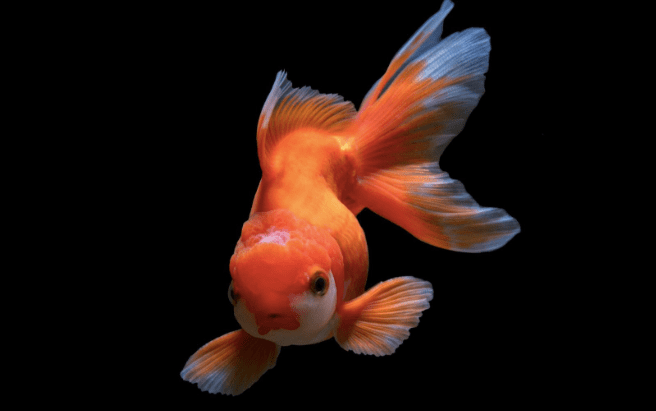
Unlocking the Secrets of Goldfish Longevity: How Long Do Goldfish Live?
Goldfish are one of the most popular and beloved pets around the world. With their vibrant colors and graceful swimming, they bring beauty and tranquility to any home or office aquarium.
But have you ever wondered how long these fascinating creatures can live?
In this article, we will explore the lifespan of goldfish and provide you with valuable insights to help you care for your aquatic companions.
Factors Affecting Goldfish Lifespan
The lifespan of goldfish can vary significantly depending on several factors. While some goldfish may live for only a few years, others have been known to live for several decades. Here are the key factors that influence the lifespan of goldfish:
1. Genetics
Just like humans, the genetic makeup of goldfish plays a crucial role in determining their lifespan. Some goldfish breeds are naturally hardier and have a longer lifespan, while others may be more prone to genetic health issues that can shorten their life expectancy.
2. Water Quality
Providing a clean and well-maintained environment is essential for the health and longevity of goldfish. Poor water quality, such as high levels of toxins or inadequate oxygenation, can significantly impact their lifespan. Regular water changes and proper filtration systems are crucial to ensure optimal water conditions.
3. Diet and Nutrition
A balanced and nutritious diet is vital for the overall health of goldfish. Feeding them a variety of high-quality commercial fish food, supplemented with occasional treats like vegetables or live food, can help support their immune system and promote a longer lifespan.
4. Tank Size and Environment
The size of the tank and the overall living environment have a direct impact on the well-being of goldfish. Providing enough space for them to swim and grow is essential. Overcrowding can lead to stress, poor water quality, and increased susceptibility to diseases, ultimately shortening their lifespan.
Average Lifespan of Goldfish
On average, goldfish can live anywhere between 10 to 15 years. However, with proper care and optimal conditions, some goldfish have been known to live up to 20 years or even longer. It’s important to note that the lifespan of goldfish can vary depending on the factors mentioned above.
Longevity Records of Goldfish
While the average lifespan of goldfish is around 10 to 15 years, there have been exceptional cases of goldfish living much longer. Here are a few notable records:
1. Tish, the Goldfish
Tish, a goldfish from the United Kingdom, held the record for the longest-lived goldfish. She lived for an impressive 43 years before passing away in 1999. Tish’s longevity was attributed to her owner’s meticulous care and a healthy environment.
2. Goldie, the Carassius auratus
Goldie, a goldfish from Australia, made headlines when she celebrated her 45th birthday in 2005. Her owner, who had inherited her from his grandmother, ensured she received excellent care and a spacious tank to thrive.
3. Fred, the Goldfish
Fred, a goldfish from the United States, lived for an astounding 41 years. His owner diligently maintained his tank, providing him with a balanced diet and a stress-free environment.
Tips for Extending Your Goldfish’s Lifespan
If you want your goldfish to live a long and healthy life, here are a few tips to keep in mind:
- Provide a spacious tank with ample room for swimming.
- Maintain clean water by performing regular water changes.
- Invest in a reliable filtration system to keep the water properly oxygenated.
- Feed your goldfish a balanced diet of high-quality fish food.
- Avoid overfeeding, as it can lead to obesity and health issues.
- Monitor the water temperature to ensure it remains within the recommended range for goldfish.
- Keep an eye out for any signs of illness or distress and seek veterinary care if needed.
By following these guidelines and providing your goldfish with the care they need, you can help ensure they live a long and fulfilling life.
Conclusion
Goldfish are captivating creatures that bring joy and serenity to their owners. With proper care and attention to their needs, goldfish can live for many years, becoming cherished members of the family.
Remember to consider the genetic factors, water quality, diet, and tank size when caring for your goldfish. By providing them with a healthy and nurturing environment, you can maximize their lifespan and create a thriving aquatic habitat.
We appreciate you for taking the time to read this article!
Finally, we hope you found this article interesting? And what do you think about ”Unlocking the Secrets of Goldfish Longevity: How Long Do Goldfish Live?!?”
Please feel free to share or inform your friends about this article and this site, thanks!
And let us know if you observe something that isn’t quite right.
Fish
Unlocking the Secrets to Goldfish Longevity: A Comprehensive Guide
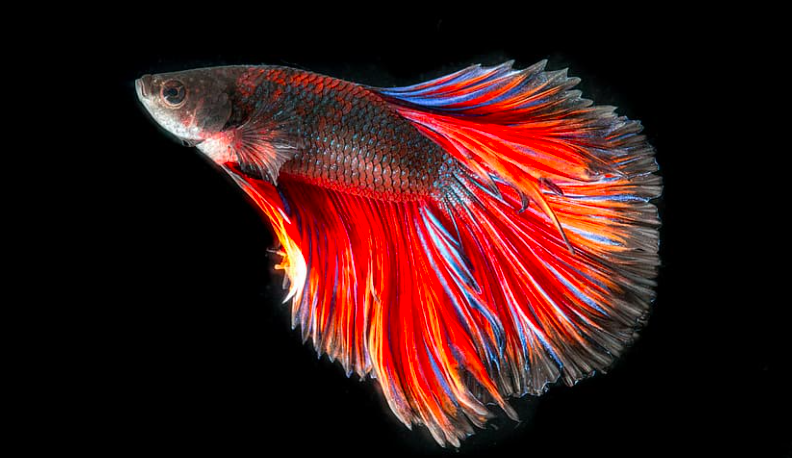
Unlocking the Secrets to Goldfish Longevity: A Comprehensive Guide
Goldfish enthusiasts, buckle up! Today, we dive deep into the fascinating world of goldfish longevity, uncovering the secrets to ensuring your aquatic companions live their happiest, healthiest, and longest lives.
Whether you’re a seasoned goldfish aficionado or a newbie to the aquatic realm, this guide will equip you with the knowledge to keep your underwater friends thriving.
Understanding the Basics: What Influences Goldfish Longevity
Goldfish, those shimmering aquatic companions adorning our homes, bring a touch of serenity to our lives. However, ensuring the longevity of these mesmerizing creatures goes beyond just feeding them regularly.
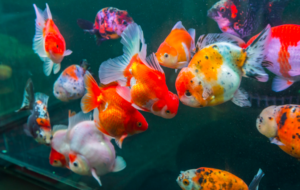
In this deep dive into the world of goldfish care, we unravel the essential factors that influence their longevity.
1. Choosing the Right Environment
Creating a conducive habitat for your goldfish is paramount. Start with an adequately sized aquarium, allowing at least 20 gallons per fish.
Proper filtration is equally crucial, maintaining water quality and reducing stress. Remember, a stress-free goldfish is a healthy goldfish.
2. Water Quality Matters
The phrase “as happy as a fish in water” holds true only when the water quality is optimal. Regular water changes, maintaining appropriate pH levels, and investing in a reliable water testing kit are indispensable practices.
These actions contribute significantly to the overall well-being and longevity of your goldfish.
3. Nutritious Diet for Longevity
Just like any pet, a goldfish’s diet plays a pivotal role in its overall health and longevity. Provide a well-balanced diet that includes high-quality flakes, pellets, and occasional treats like live or frozen brine shrimp. Avoid overfeeding, as it can lead to health complications.
4. Adequate Space for Growth
Goldfish have the potential for substantial growth. Stunting, a common issue, occurs when they are kept in cramped environments. Ensure your goldfish have enough space to grow naturally, promoting a healthier and longer life.
5. Companionship and Tank Mates
Goldfish are social creatures, and companionship can positively impact their mental well-being. However, not all fish make suitable tank mates. Research and carefully choose compatible species to avoid stress and potential conflicts.
6. Regular Health Check-ups
Prevention is better than cure, even in the underwater world. Conduct regular health check-ups, examining your goldfish for signs of illness. Promptly address any issues to prevent the spread of diseases, ensuring a longer and happier life.
7. Temperature Control
Maintaining a stable water temperature is crucial for goldfish longevity. Fluctuations in temperature can lead to stress and susceptibility to diseases. Invest in a reliable aquarium heater and monitor the temperature consistently.
8. Genetics and Breeding
The genetic makeup of your goldfish plays a vital role in determining its lifespan. Opt for reputable breeders to ensure healthier genetics. Moreover, responsible breeding practices contribute to the overall well-being of goldfish populations.
9. Environmental Enrichment
Goldfish, despite their calm demeanor, benefit from environmental enrichment. Incorporate decorations, plants, and hiding spots in the aquarium. This not only adds aesthetic value but also provides mental stimulation for your aquatic friends.
10. Regular Observations and Interaction
Understanding your goldfish requires regular observations. Take time to interact with your aquatic companions, learning their behavior patterns. Early detection of any deviations from normal behavior can be instrumental in preventing potential health issues.
Common Mistakes to Avoid: Pitfalls in Goldfish Care
Embarking on the journey of goldfish care is a rewarding experience, but pitfalls lurk along the way. To ensure the well-being and longevity of your aquatic companions, let’s delve into the common mistakes that many unwitting enthusiasts often make.
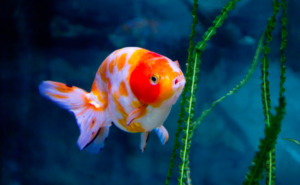
1. Overcrowded Tanks: The Space Conundrum
One prevalent mistake is underestimating the space goldfish require. Overcrowded tanks lead to stress, stunted growth, and increased vulnerability to diseases. Ensure your goldfish have ample space to swim and grow by following appropriate stocking guidelines.
2. Neglecting Water Quality: A Silent Menace
Perhaps the most critical factor in goldfish care is water quality. Neglecting regular water changes, failing to monitor pH levels, and overlooking filtration systems can result in poor water quality. This, in turn, jeopardizes the health and longevity of your goldfish.
3. Inappropriate Tank Mates: The Compatibility Quandary
While companionship is beneficial, selecting incompatible tank mates can lead to aggression, stress, and even injury. Research thoroughly to identify suitable tank mates, considering size, temperament, and environmental preferences.
4. Overfeeding Woes: Too Much of a Good Thing
The adage “less is more” holds true in goldfish feeding. Overfeeding not only pollutes the water but also contributes to health issues like swim bladder disorder. Follow a balanced feeding schedule and avoid the temptation to shower your goldfish with excessive treats.
5. Inconsistent Temperature Control: The Rollercoaster Effect
Goldfish thrive in stable environments. Fluctuating temperatures can stress your aquatic friends and make them susceptible to diseases. Invest in a reliable aquarium heater and maintain a consistent water temperature within the recommended range.
6. Lack of Observation: Ignoring Behavioral Cues
Neglecting to observe your goldfish regularly can result in late detection of health issues. Changes in behavior, appetite, or swimming patterns may indicate underlying problems. Stay vigilant and address any deviations promptly.
7. Poor Diet Choices: Nutritional Neglect
Goldfish need a well-balanced diet for optimal health. Relying solely on one type of food or feeding inappropriate treats can lead to nutritional deficiencies. Consult with experts or veterinarians to create a nutritionally balanced diet for your goldfish.
8. Overlooking Tank Maintenance: The Dirty Dilemma
A clean tank is a happy tank. Neglecting regular maintenance tasks such as cleaning filters, removing debris, and scrubbing algae can compromise water quality and create an unhealthy environment for your goldfish.
9. Ignoring Genetic Factors: The Breeder’s Impact
Choosing a goldfish from a reputable breeder is crucial. Poor breeding practices can result in genetic predispositions to illnesses and shorter lifespans. Research breeders and opt for those known for responsible breeding.
10. Skipping Quarantine: A Preventive Measure
Introducing new fish without quarantine can introduce diseases into your aquarium. Always quarantine new additions to monitor their health before introducing them to the main tank, preventing potential outbreaks.
Health Check: Identifying and Addressing Goldfish Ailments
Goldfish, with their dazzling scales and captivating swim, are delightful pets. However, even the most dedicated owners can encounter health challenges.
In this guide, we delve into the art of identifying and addressing common goldfish ailments to ensure your finned friends lead long and healthy lives.
1. Recognizing Signs of Illness
Understanding your goldfish’s normal behavior is the first step in identifying health issues. Watch for changes in appetite, swimming patterns, coloration, and the appearance of fins or scales. Any deviations from the norm may be indicative of an underlying problem.
2. Common Goldfish Ailments
a. Ich (White Spot Disease): This prevalent parasite manifests as small white dots on the skin, fins, and gills. Quarantine affected fish, gradually raise the water temperature, and treat with a suitable medication.
b. Fin Rot: Recognized by ragged fins or tail, fin rot is often caused by poor water quality. Improve water conditions, remove any decaying matter, and administer antibiotic treatments as necessary.
c. Swim Bladder Disorder: Affecting buoyancy, swim bladder issues result in floating or sinking. Adjust feeding habits, offer a diet with more fiber, and consider a temporary fasting period.
d. Dropsy: Characterized by swollen body and scales, dropsy indicates internal organ failure. Isolate the affected fish, enhance water quality, and consult a vet for antibiotics.
3. Proactive Measures for Preventing Illness
a. Maintain Water Quality: Regular water changes, proper filtration, and monitoring water parameters are fundamental in preventing a myriad of health issues.
b. Quarantine New Additions: Before introducing new fish to your aquarium, quarantine them to prevent the spread of potential diseases.
c. Balanced Diet: Provide a varied and nutritious diet to boost the immune system. Avoid overfeeding, as it can lead to digestive problems.
d. Adequate Space: Avoid overcrowding in the tank, as it can stress fish and contribute to the spread of diseases.
4. Consulting a Vet: When and Why?
Knowing when to seek professional help is crucial. If home remedies prove ineffective or if the condition worsens, consult a vet experienced in aquatic animal care. Early intervention can make a significant difference in your goldfish’s recovery.
5. Isolation and Medication
When you notice signs of illness, promptly isolate the affected fish to prevent the spread of diseases. Follow the recommended dosage of medications, and complete the treatment course even if the fish appears to recover sooner.
6. Stress Management
Goldfish are sensitive to changes in their environment. Minimize stress by maintaining a stable environment, avoiding sudden changes, and providing adequate hiding spots.
Conclusion: Nurturing the Fountain of Youth for Goldfish
In the delicate dance of goldfish care, the key to unlocking the fountain of youth lies in our hands. By avoiding common pitfalls, embracing proper nutrition, and crafting a haven of harmony, we bestow upon our aquatic companions the gift of vitality.
As custodians of their underwater world, our choices ripple through their scales, shaping a narrative of joy, longevity, and the timeless beauty found in a well-tended aquarium.
Here’s to the enduring health and happiness of our finned friends, and the shared moments that unfold within the watery embrace of their home.
Frequently Asked Questions (FAQs)
Can goldfish live in bowls?
Goldfish need ample space to thrive. Bowls are too small and lack proper filtration, leading to poor water conditions and health issues. Opt for a spacious tank instead.
How often should I feed my goldfish?
Feed your goldfish small, regular meals 2-3 times a day. Monitor their consumption and adjust accordingly to prevent overfeeding.
Are goldfish hardy pets?
While goldfish are hardy, they require proper care. Neglecting their needs can result in health issues. With the right care, they make resilient and long-lived companions.
Do goldfish get bored?
Yes, goldfish can get bored. Introduce toys, mirrors, and novel elements to their environment to keep them mentally stimulated.
Can I keep different goldfish breeds together?
Compatibility is crucial. Research the specific needs and temperaments of different goldfish breeds before introducing them to the same tank.
Embrace these insights, and you’ll be well on your way to unlocking the secret to goldfish longevity. Your aquatic friends will thank you with a lifetime of joy and vibrant underwater adventures.
Note: This article is not intended as veterinary advice. Consult with a qualified professional for specific concerns regarding your goldfish’s health.
We appreciate you for taking the time to read this article!
Finally, we hope you found this article interesting? And what do you think about ”Unlocking the Secrets to Goldfish Longevity: A Comprehensive Guide!?”
Please feel free to share or inform your friends about this article and this site, thanks!
And let us know if you observe something that isn’t quite right.
-

 Pet Care2 years ago
Pet Care2 years agoThe Best Dog Collars For 2022
-

 Dogs2 years ago
Dogs2 years agoBichon Frise: The Happy, Playful, and Cuddly Companion
-

 Trending Pet Stories1 year ago
Trending Pet Stories1 year ago2023 ‘World’s Ugliest Dog’ Winner: Scooter’s Tale of Resilience
-

 Animals3 years ago
Animals3 years agoAre There Animals Having Down Syndrome?
-
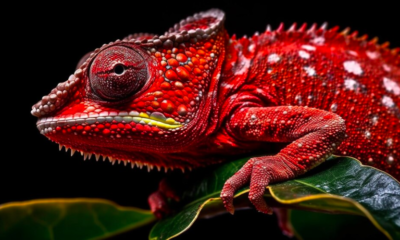
 Pets2 years ago
Pets2 years agoThe Fascinating World Of The Red Chameleon
-

 Dogs3 years ago
Dogs3 years agoTop 10 Most Popular Dog Breeds According To AKC.
-

 Dogs3 years ago
Dogs3 years ago21 Dog Breeds That Resemble Bears Or Teddy Bears!
-

 Dogs3 years ago
Dogs3 years agoEskimo Dogs from Canada – What Are They? – Find Out!







